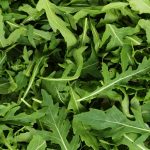
The Prickly Pear is a cactus which is found through vast tracts of the world and which is also commonly known as nopal or nopales. It is scientifically known as Opuntia ficus-indica (L.) Mill and is in the Cactaceae family. It is also known as the Indian fig in Central America.
The Prickly Pear Cactus Fruit
The fig has an oval shape, with a thick pulp representing about 40% of the weight of the fruit. The seeds are dispersed. It has a high mineral content, including elements such as phosphorus and potassium, in addition to a low calorific value.
The fruit is grown throughout much of the southern states of the USA, Central America, Mexico and South America. The cactus grows mainly in the semi-arid regions of the world. The fruit itself is consumed widely when fresh, for use in desserts and as an ingredient in many types of dishes (Alves et al., 2008). It is also sold as a cactus juice and the pads with the fruit attached can also be bought. A number of farmers markets and grocery stores now sell the fruit if that is how it should be called in specialist sections. the juice is available raw or in cartons as a processed product.
The fruit has a high moisture content which means it perishes easily. Post-harvest losses are very high with this fruit and comparable with mango losses in India. To retain its qualities, the fruit is often dried and lends itself very well to osmotic dehydration
Componentry
The Prickly Pear cactus fruit contains high quantities of flavonoid antioxidants, especially flavonol 3-O-glycosides such as quercetin, kaempferol, and isorhamnetin, dihydroflavonols, flavanones, and flavanonols (Kuti, 2004).
Nutritional Qualities
It has been investigated for:-
- treating diabetes by reducing blood sugar levels,
- reducing blood cholesterol,
- obesity
- treating hangovers especially the unpleasant aspects relating to nausea and headache.
It is also a noted fruit with prospective antiviral and anti-inflammatory properties. It’s too early to call prickly pear cactus a superfood, but it can be part of a healthy diet. Indeed, prickly pear cactus is popular in many areas of the world, particularly Latin America, because of its high fiber content and high levels of antioxidants and various carotenoids.
Uses For Prickly Pear
The edible parts are the leaves, flowers, stems and fruit. Prickly pear cactus is eaten whole but always boiled, grilled and in some instances sauteed. It is also made into juice, preserves and jams, chutneys and there are some sauces, both savoury and sweet which use it successfully.
Ideally, if you are unsure about whether to try it, consider prickly pear with caution because of some unwanted side effects. These include mild diarrhea, nausea, increased stool volume, increased stool frequency and abdominal fullness.
This fruit has two edible portions; the pad or nopal which is its vegetative part and the tuna, which is the fruit. Nopales is rich in various healthy nutrients.
Some countries regard it as an important aspect of their cuisine. Mexico for example uses it as a vegetable because it has a low calorific content and its succulent, green leaves add structure and fibre to a dish.
The uses of Prickly Pear fruit extracts as an additive from a functional perspective are limited. It could have the potential as a strong antioxidant source but it has poor water solubility. The extracts is not used as colouring agent or flavour because of this particular limitation. It is used in low water moisture foods as an additional ingredient. Chocolate is a good example.
Attempts to alter its solubility or modify it in some way have been tried. One approach has been to apply Argon cold plasma treatment which it is claimed can improve the antioxidant and water-solubility characteristics (Kim et al., 2019).
Prickly Pear (Nopal) As A Hangover Cure
Any product which can be taken to cure a hangover must be a good thing. A study back in 2004 that was reported in the Archives of Internal Medicine thought it was on the right track. A hangover is characterised by splitting headache, nausea, dry mouth and loss of appetite although you can still find a Peshwari Nan bread if you look for it.
In that study, 64 healthy young adults received either a nopal extract or a placebo five hours before consuming up to 1.75 grams of alcohol per kilogram of their body weight (Wiese et al., 2004). Those people who took nopal did not suffer the same debilitating effects of a hangover as those taking the placebo. Nopal also reduced the levels of a marker associated with inflammation, especially a hangover which is called C-reactive protein.
The jury is still out however on the benefits of Prickly Pear as a hangover cure. A recent research review in the British Medical Journal (BMJ) finds that there is no real evidence to support the use of complementary medicine in reducing a hangover let alone ‘curing’ one.
Alleviating Stomach Ulcers
One of the most promising possibilities for prickly pear is its potential to help heal stomach ulcers and treat a condition called ulcerative colitis (UC), which is characterized by inflammation and ulcers in the large intestine.
Some studies have noted that supplementing with prickly pear juice slowed the growth of stomach ulcers in rats. These powerful anti-ulcer effects are thought to be due to the antioxidant betanin.
References
Alves, M.A., de Souza, A.C.M., Gamarra-Rojas, G. & Guerra, N.B. (2008). Fruto de palma (Opuntia ficus-indica (L) Miller, Cactacecae): morfologia, composic¸a˜o quımica, fisiologia, ındices de colheita e fisiologia po´ s- colheita. Revista Ibereroamericana Tecnologı´a Postcosecha, 9, pp. 16–25.
(2004). Antioxidant compounds from four Opuntia cactus pear fruit varieties. Food Chemistry, 85(4), pp. 527–533 (Article).
Pittler, M.H., Verster, J.C., Ernst, E. (2005) Interventions for preventing or treating alcohol hangover: systematic review of randomised controlled trials. BMJ. 331 doi: (article)
Wiese, J., McPherson, S., Odden, M.C., Shlipak, M.G.(2004) Effect of Opuntia ficus indica on Symptoms of the Alcohol Hangover. Arch Intern Med. 2004;164(12) pp. 1334–1340. doi:10.1001/archinte.164.12.1334 (article)

Leave a Reply